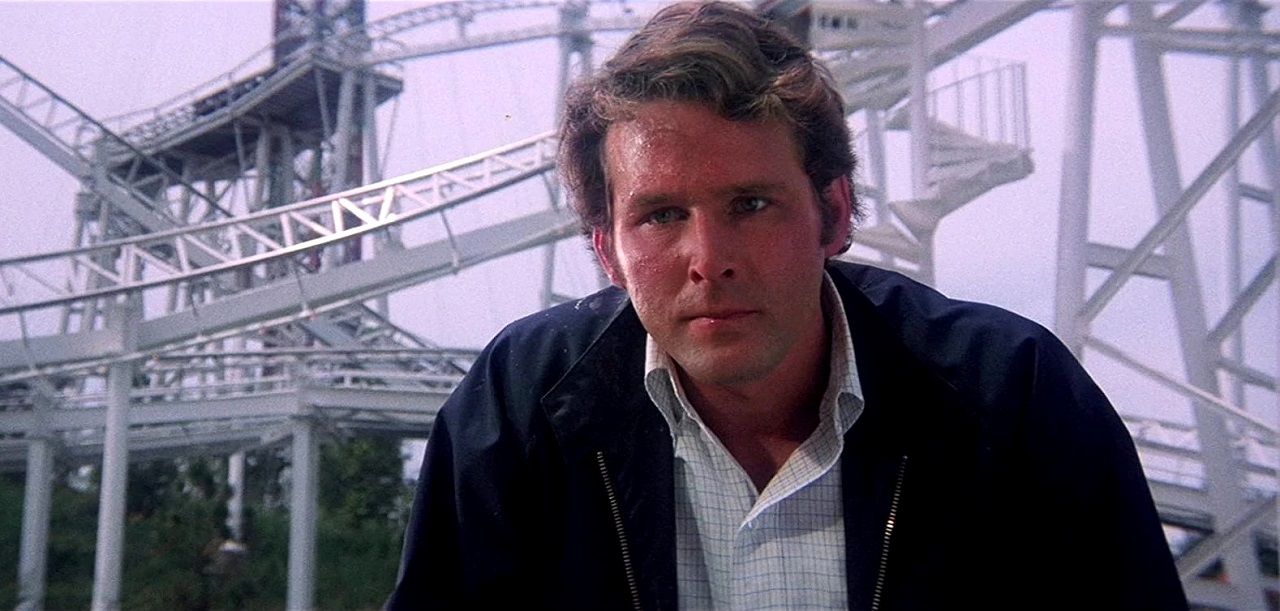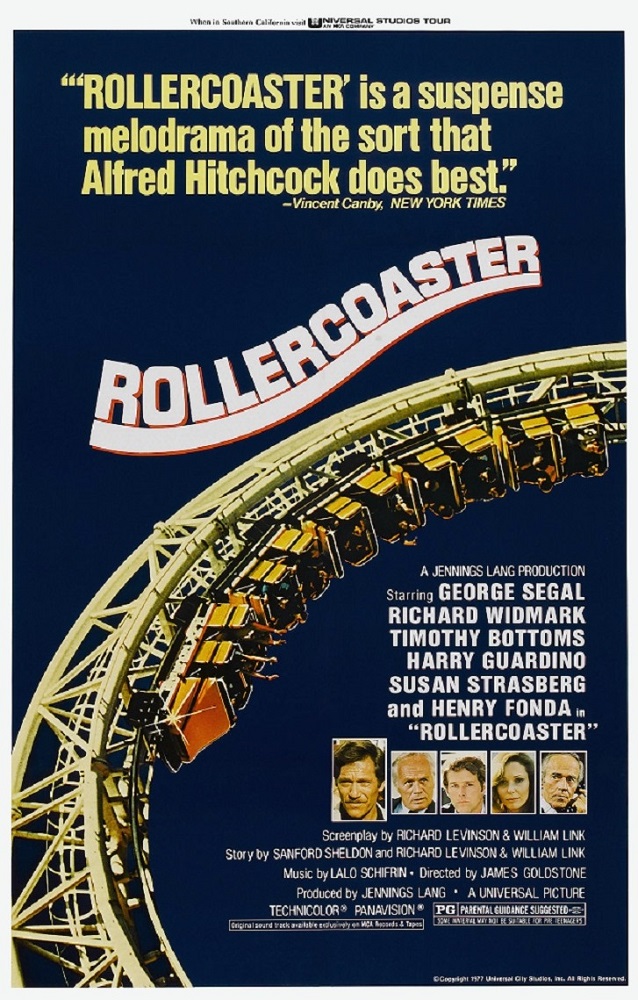Crew
Director – James Goldstone, Screenplay – Richard Levinson & William Link, Story – Richard Levinson, William Link & Stanford Sheldon, Suggested by a Story by Tommy Cook, Producer – Jennings Lang, Photography – David M. Walsh, Music/Sensurround Music Effects – Lalo Schifrin, Production Design – Henry Bumstead. Production Company – Universal.
Cast
George Segal (Harry Calder), Timothy Bottoms (Young Man), Richard Widmark (Special Agent Thomas Hoyt), Henry Fonda (Simon Davenport), Susan Strasberg (Fran), Helen Hunt (Tracy Calder)
Plot
A bomber is blowing up rollercoaster rides across the country. At a meeting of amusement park owners in Chicago, the bomber has a cassette tape delivered that contains his demands for a million dollars. Harry Calder, an inspector from the California Department of Safety and Standards who investigated one of the bomb sites, crashes the meeting where he tries to convince the owners how clever the bomber is. Upon Harry’s advice, the FBI is called in. However, the bomber has been listening in on the meeting via a bug and is so impressed that he delivers another demand – that Harry be used to drop the ransom money at an amusement park in Virginia. There the bomber leads Harry on a cleverly planned trail around the park. When he discovers that the FBI have secretly marked the bills, the bomber is angered enough to then announce that he is going to blow another ride up. It is up to Harry to outwit and catch the bomber before his deadline.
Rollercoaster was sold amid the 1970s fad for disaster movies that came about after the huge successes of films like Airport (1970) and sequels, The Poseidon Adventure (1972) and The Towering Inferno (1974). These usually featured an all-star cast and a large man-made monument being threatened by some type of catastrophe. The era managed to pass through most of the man-made edifices it could think of – skyscrapers, ocean liners, trains, planes, and with people and places threatened by earthquake, asteroid, hurricanes, bees and volcanoes.
Clearly by the time of Rollercoaster, novelty was getting a little scarce when it came to finding venues – as a disaster movie setting, a rollercoaster seems just a little underwhelming. On the other hand, Rollercoaster is not really a disaster movie at all – it is more of a mad bomber psycho-thriller. [Certainly, mad bomber plots did feature in other disaster movies of the era including Airport (1970) and Juggernaut (1974)]. As such is quite a good little film.
Rollercoaster was shot in the Sensurround process created by Universal and used in one previous disaster movie, Earthquake (1974). Sensurround involved placing a series of bass speakers placed around the auditorium, which amplified low frequencies and made the theatres literally seem to shake. Directorially, Rollercoaster is not terribly exciting. Certainly, seen on the home screen today and devoid of the up-front Sensurround system, the rollercoaster point-of-view shots lose whatever impact they might have had in a cinematic setting.

The attempts at everyday characterisation for hero George Segal are pretty awful (although one can spot a fourteen year-old Helen Hunt in her first big screen appearance as his daughter), while the surroundings are very datedly 1970s – people laze about in bell-bottoms and drop the expression ‘cool’ a lot.
However, once it gets to the central suspense, the film becomes a clever battle of wits. The idea of a calmly calculating madman, not at all concerned whether his extortees involve the police or not, in fact using them to his advantage, is a good one. It is the twists and turnings the plot takes, as opposed to James Goldstone’s crude and suspenseless direction, that keep one on a seat-edge throughout.
Director James Goldstone had worked in television since the early commercial days in the 1950s and directed episodes of many classic series, including the second pilot for Star Trek (1966-9). He made a number of other films, mostly Westerns and the Irwin Allen disaster movie The Day the World Ended/When Time Ran Out (1980). His only other genre work was the Disney space opera mini-series Earth Star Voyager (1988).


